My Experience With The Total Solar Eclipse - April 8th, 2024
My coverage of the event - with a few added stresses.
At the time of writing, it’s April 15th. A week following the total solar eclipse of 2024 that many people were looking forward to for a long time. In my case, I had the day marked down since my first total eclipse experience back in 2017. That experience has gotten me hooked on them and I very much enjoy viewing both annular and total eclipse events. I will try to see as many as I can in my life.
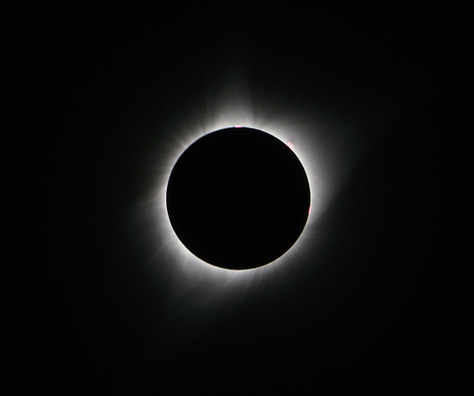
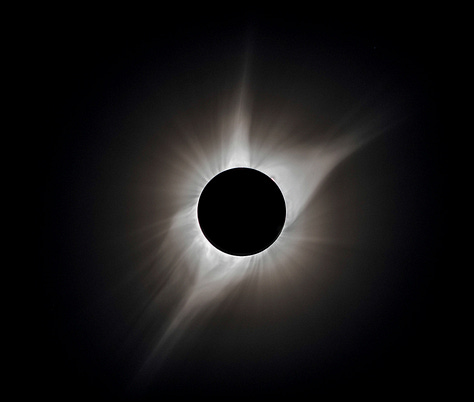
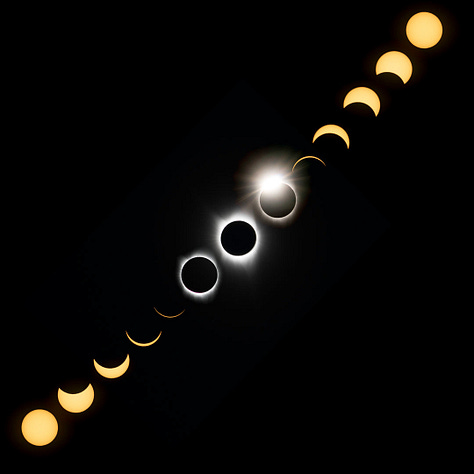
Today, I’ll give a brief recap of how the 2024 event went from my close-to-home area – Southern Ontario. I’ll admit, in the morning, some major regret was sinking in because of the cloud and I was wondering how big of a mistake I had made. We’ll discuss that shorty.
Inverse Storm Chasing
In effect, the process to view solar eclipses is inverse storm chasing. Your priority is getting to clear skies at all costs. Upper-level cloud (or cirrus) isn’t a death sentence for viewing, as you’ll see from 2024’s pictures, but thicker, midlevel and low-level cloud will block viewing entirely. It is to be avoided.
Based on the lowest chances for cloud cover by climatology, my original plans, years ago, were to head to Texas to view the eclipse. Mexico provided the best odds for low cloud viewing based on climatology, but Texas (Dallas, specifically), would be the cheapest option for best chances in my case. The totality line would pass directly over the city, so anywhere along that line, especially heading to the southwest, would provide for good viewing - at least by climatology.
I changed my mind about a year out for two reasons: the first was due to the risk of severe weather or a strong low pressure system providing cloud cover over a large area in the path, and the second was after seeing prices for flights and hotels jump much higher than I thought; even for a year out. Knowing totality would be directly over my house, I figured as long as a low pressure did not block most of the Great Lakes region, I’d be able to travel SW or E along the path for clearing if need be.
The Day
What was quite amusing, in a frustrating way, was that Southern Ontario did not have a cloud in the sky in the two days preceding — Saturday, Sunday — and the day after, the Tuesday. Only eclipse day itself, the Monday, received notable cloud cover. A trough in the US Midwest pushed thicker midlevel cloud into Southern Ontario in the early Monday morning hours that lasted until 30 minutes before totality time in some places. It came down to the last minute for clearing in some parts within the eclipse line.
With totality expected at 3:18 pm at my location, I had to make a decision to head southwest to clearing, or stay at my house by 2:30 pm.
Looking to the southwest of my location, I could see clear skies, so with the uncertainty that clearing may not reach my area in time, ultimately, I chose to drive about 25 minutes south and set up in an area that was both in clearing and on an old road turned temporary parking lot.
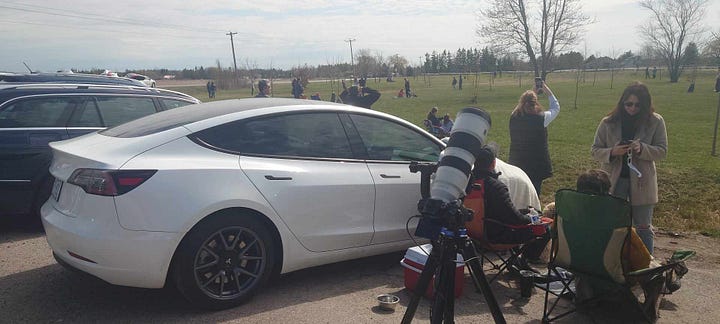
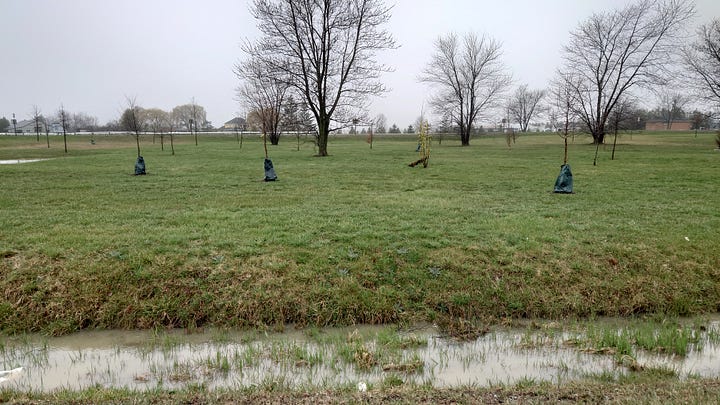
To my surprise, there were plenty of people here already. The road to this area is rather busy (for a country road), but the area used for viewing rarely sees anyone. My guess is many people were searching for an area to stop; both from out of town and from those heading back west from the Niagara region, which was inundated with thicker clouds, and stumbled onto this spot. I set up with about 15 minutes left before totality occurred and began to talk with the people around me; many of which were experiencing a total eclipse for the first time.
The Eclipse
In this 15-minute window before totality, some high-level cirrus started to form south of me and head towards my area of viewing. I knew totality wouldn’t be completely free of clouds now, but since they weren’t thick, I knew I’d be able to get pictures of it nevertheless. In my opinion, they added mood to many of the pictures, as you’ll see below.
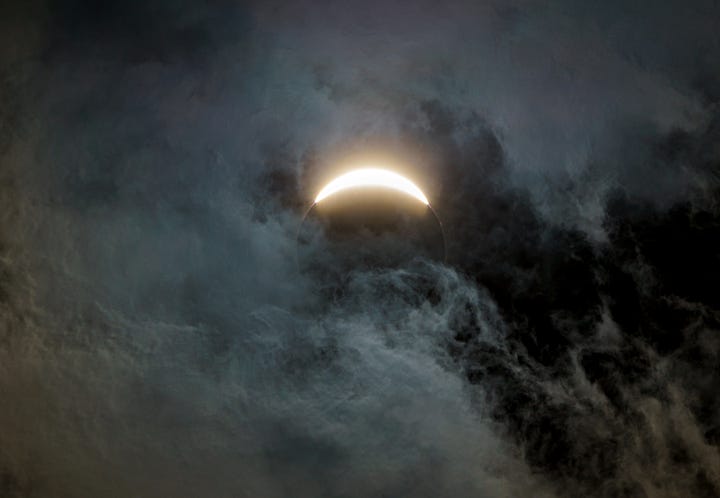
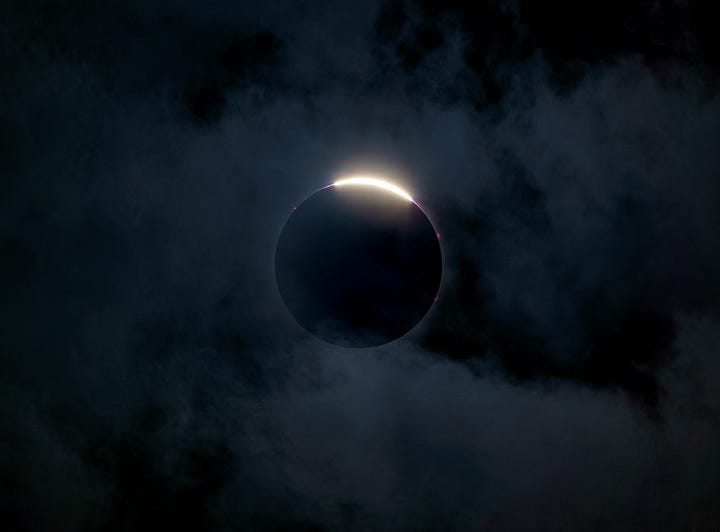
Totality lasted about 2 minutes and 50 seconds where I was. The second time, I felt more prepared, but just as excited as the first time. In this nearly three minute window, I observed:
(1) A 360-degree sunset. In any direction you looked, it had a similar view to that of a western sky sunset. Many people at the site were taken back by this phenomenon the most of all the changes.
(2) The sun’s shadow coming directly at the site. Visibility was helped by the cirrus aloft that helped show its progression from the SW. In the video enclosed below, you can see the shadow progressing towards our location.
(3) A notable temperature drop. As more of the sun was blocked by the moon, less sunlight meant less diurnal heating, so temperatures dropped quickly closer to totality. I can’t find exact readings for my area, and can’t get to the minute temps, but YHM was reporting a few degrees of temperature drop during the hour before, during, and after totality. Temperatures rose again once the partial phase of the eclipse yielded to full sun once again.
(4) At the exact moment of totality, there was plenty of cheering and yelling in excitement. Unlike Nebraska, which had many more people and peak cheering sounded like an NFL game, this location was more reserved with less people, but still brought forth audible excitement. It is one of the more memorable parts of these events — the reactions around you.
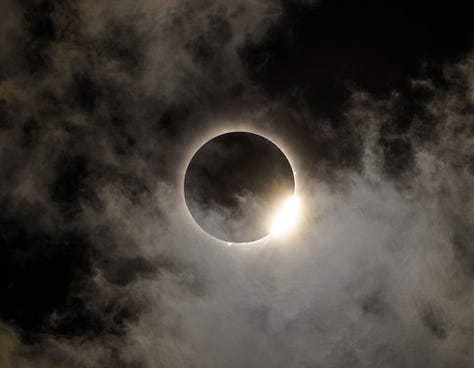
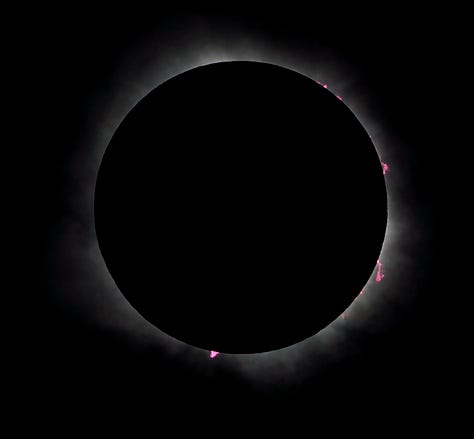

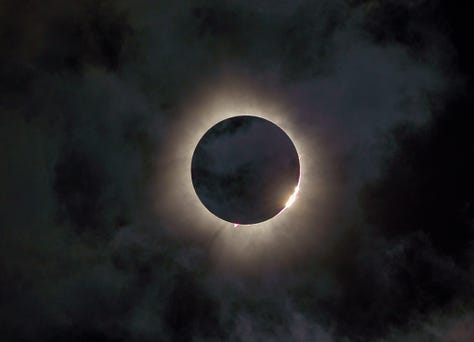
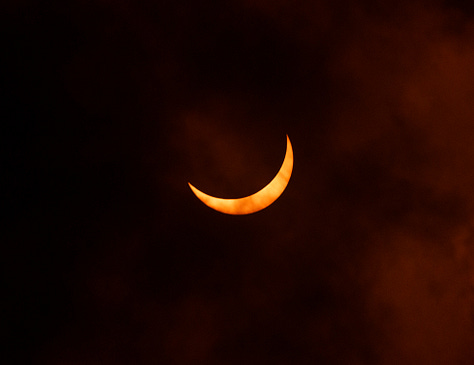
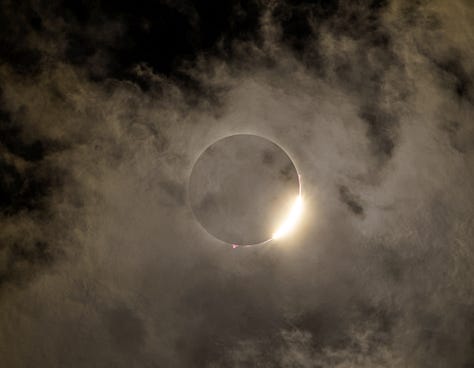
In Conclusion
I had plans to do a timelapse, but had to cancel due to ongoing cloud cover and needing to change positions right before totality. The event was just as good as the previous one was in 2017, though. It came with extra stress of needing to calculate down-to-the-minute cloud coverage and a loose idea of an area to relocate to; as opposed to knowing I had options in Nebraska.
Additionally, despite having to deal with high level clouds, this event provided a different experience and different outcome for the pictures. I now have seen a clear sky eclipse and a partial clouded one — with very different outcomes in terms of pictures. Until next time (maybe in Europe 2026).


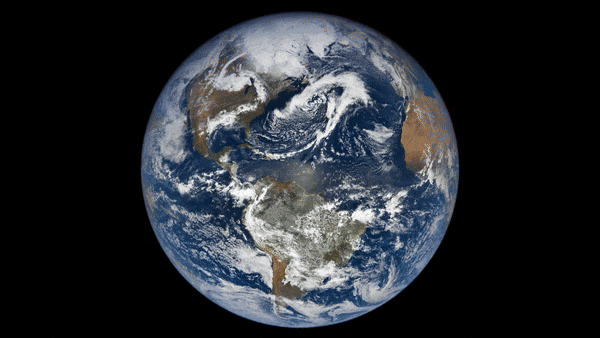
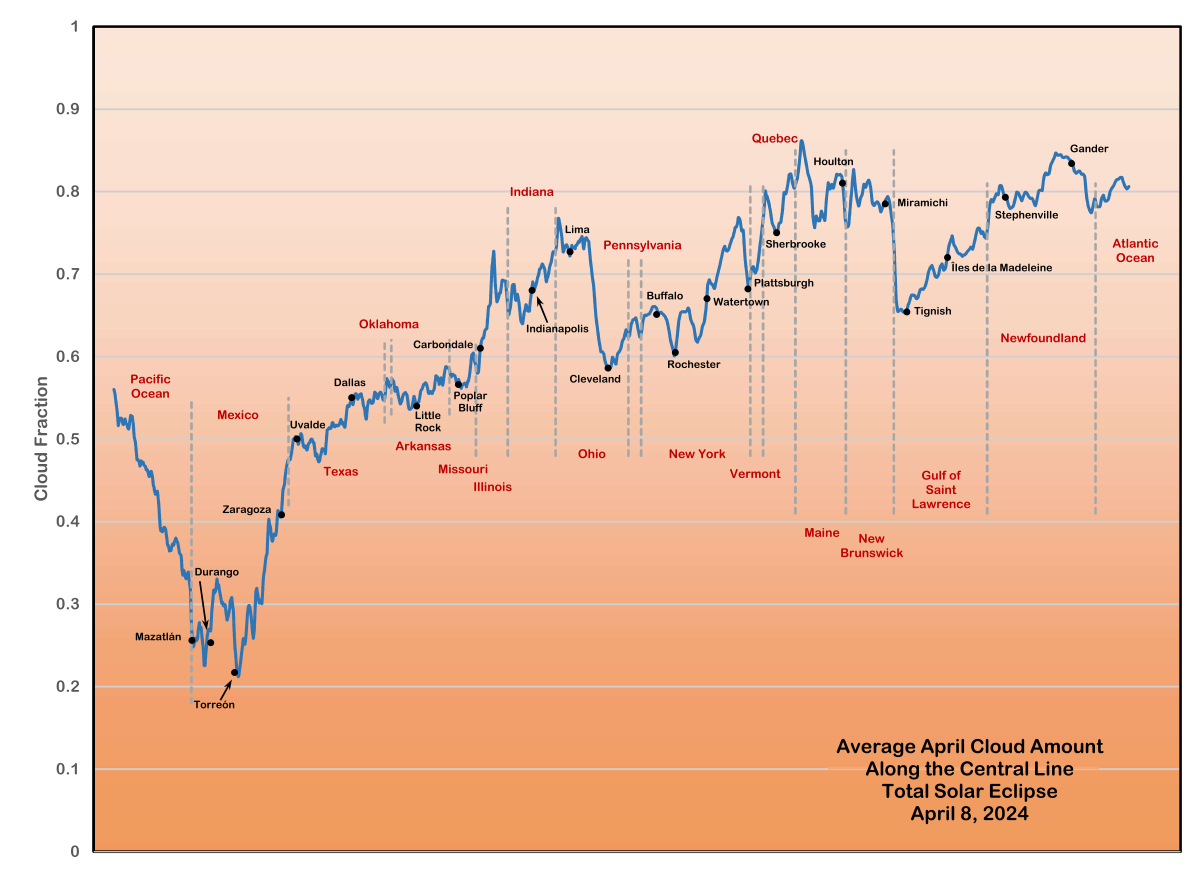
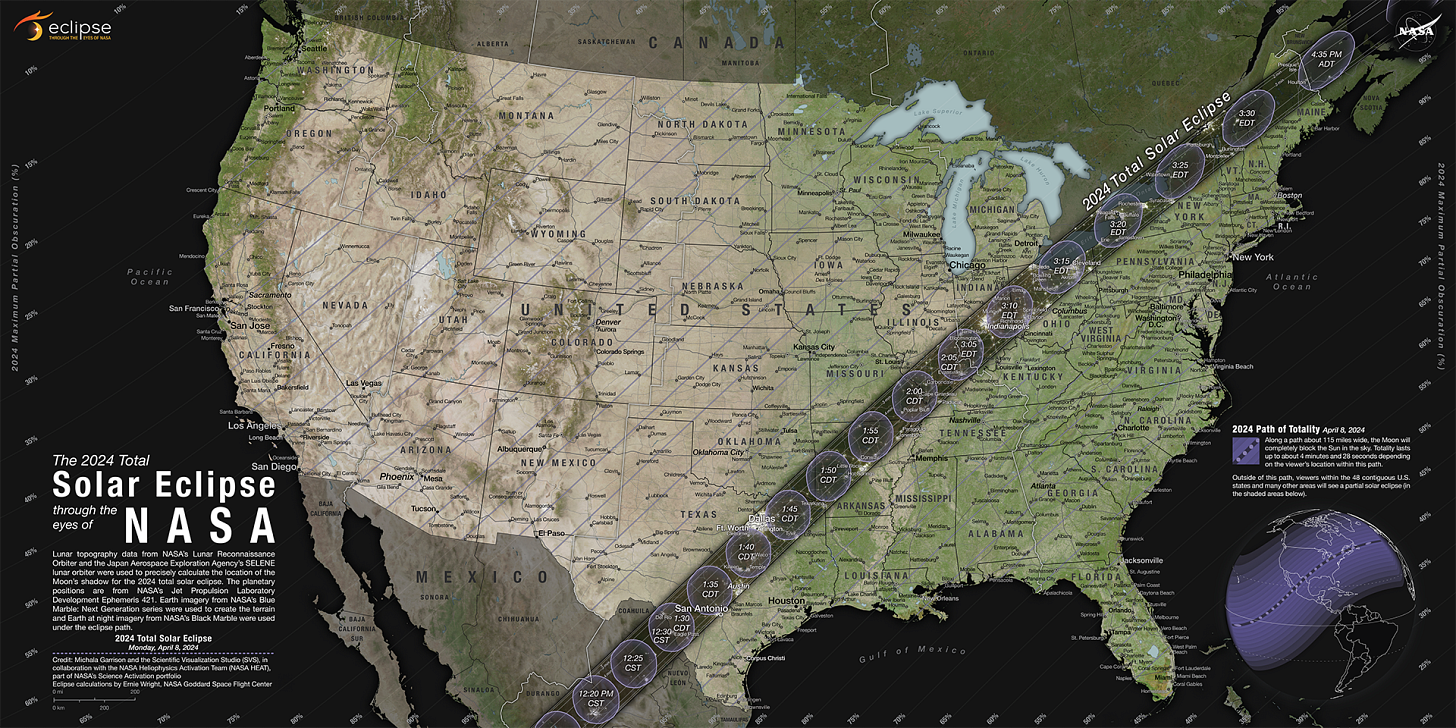
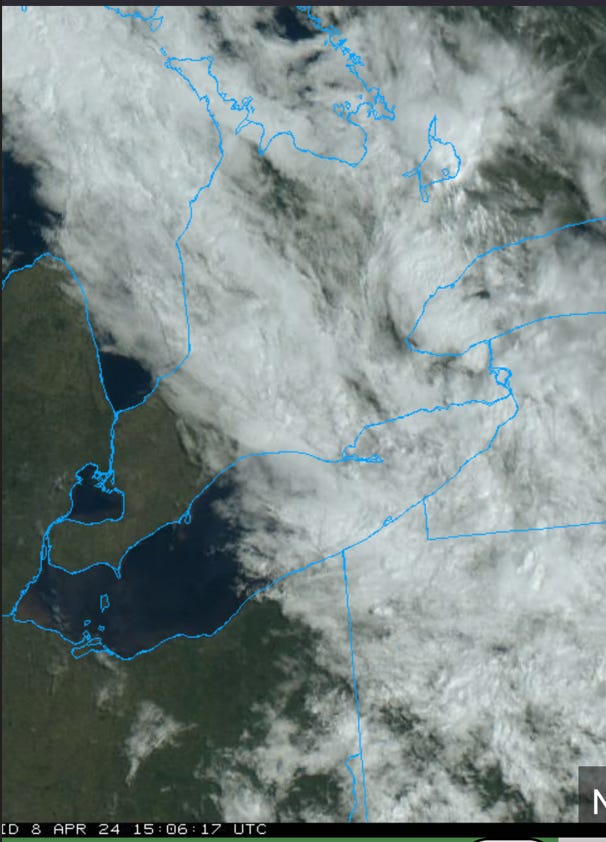
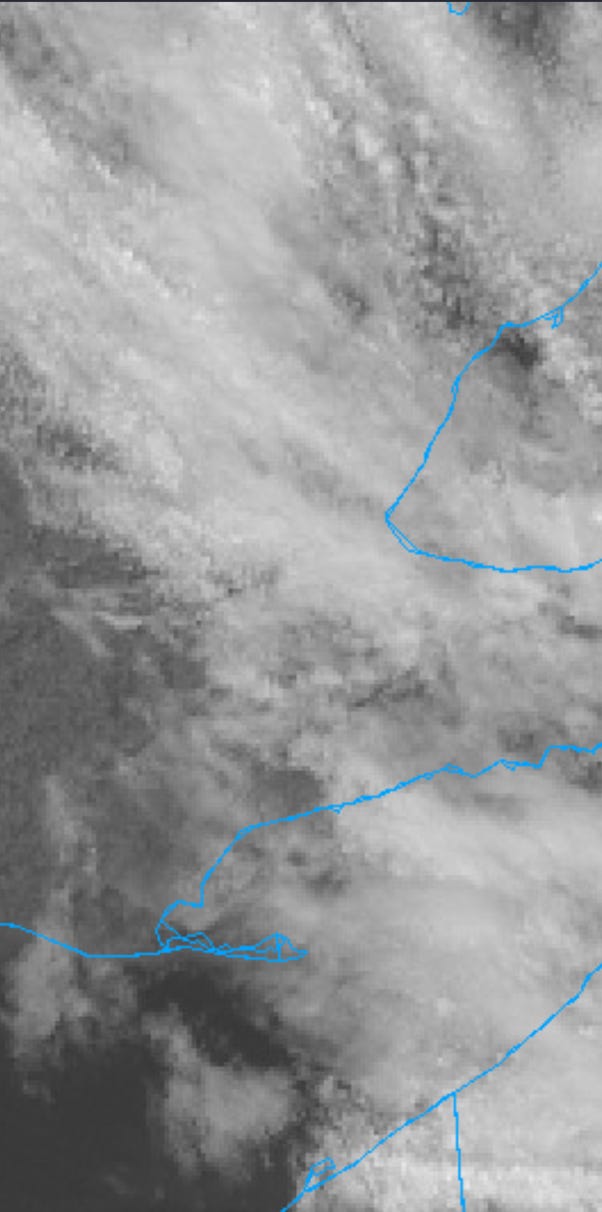
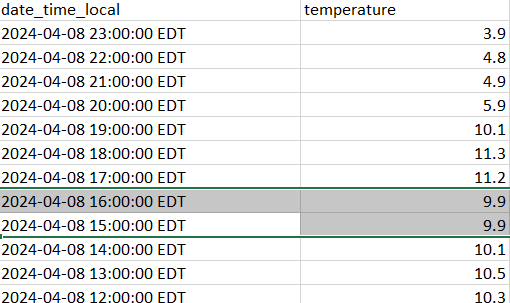
Anton- I have yet to revisit this event through an inverse storm chasing lens. I think it’s deeply interesting, especially when coupled by the breathtaking photograph and a brilliantly written personal account.
Good stuff! The vid showing the shadow progression is great.